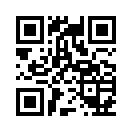How to improve the transmission distance and signal quality of the wireless microphone?
How to improve the transmission distance and signal quality of the wireless microphone?
The convenience of wireless microphones is obvious to all, in addition to stage performances, it is also widely used in KTV, conference rooms and other occasions. However, some people think that wireless microphones are not as stable as wired microphones and have limited transmission distances. In fact, this is not the case. The current microphone technology is already very advanced in terms of stability and has its know-how in improving transmission distance and signal quality.
1. The antenna determines the actual receiving distance and quality of the receiver
The wireless transmission distance is mainly determined by the power of the transmitter and the sensitivity of the receiver. Directly increasing the transmission power or receiving sensitivity can increase the use distance and signal quality, but the user cannot change the specifications of the two after leaving the factory, especially In addition to the limitation of radio wave regulations, the lack of mutual interference between multi-channel signals will be more serious. The power consumption of the product will increase, and the using time will be greatly shortened. Of course, this is not the best policy.
The additional way is to improve receiver sensitivity. In theory, when the sensitivity is increased by 6dB, the receiving distance can be doubled, but in fact, it is not easy for the user to change the original sensitivity of the receiver arbitrarily. Because in actual application, the transmitted signal is received through the antenna of the receiver, so the only way for users to improve the overall system transmission effect is to improve the characteristics and installation of the receiving antenna!
2. Introduction to antenna characteristic specifications
In the wireless microphone system, the wireless signal of the microphone is transmitted to the air by the transmitting antenna, and then the signal is collected by the receiving antenna and transmitted to the receiver. It can be seen that the antenna is a window for transmitting and receiving wireless signals. The function of the antenna is very important. It is recommended to choose a receiver with a detachable antenna, so that users can choose different types of antennas to install according to the actual needs of the use, in order to achieve the best reception.
When choosing an antenna, the characteristics to consider are as follows
a. Frequency
When selecting the antenna of a wireless microphone receiver, you must first pay attention to the frequency of the antenna. This specification is usually marked as the frequency range of use, the so-called "bandwidth." In the frequency range, the radio signals received by the antenna can be effectively transmitted to the receiver. Generally, the length of the antenna is inversely proportional to the level of the frequency used, so the antenna suitable for VHF systems is significantly longer than the UHF systems.
b. Antenna impedance
Antenna impedance specifications are generally 50 Ω and 75 Ω. Selecting an antenna with an impedance of 50 Ω can achieve the best match in signal transmission. Its characteristics are usually based on input reflection coefficient or voltage standing wave ratio (VSWR). It shows that the antenna with good impedance characteristics generally has an input reflection coefficient below -10 dB or a voltage standing wave ratio of less than 2: 1.
c. Antenna Gain
Antenna gain refers to the ability of the antenna to transmit or receive signals. The gain value is obtained relative to a single point radiator (Isotropic radiator). The unit of the antenna gain is expressed in dBi, where "I" represents a single point radiator It is a virtual sphere that can send or receive signals in all directions. A basic dipole antenna (Dipole). The theoretical maximum gain value is about 2.15 dBi. This is because the gain of the antenna design usually has a certain degree of concentration, and a value greater than 0 dBi will be obtained. Whenever you intend to concentrate the gain in a certain direction, it is called a directional antenna. The narrower the angle of concentration, the higher the gain, but at the same time, the gain in other directions will be relatively fading. Users must pay attention to the antenna Directivity when installing.
d. Antenna Polarization
In actual use of antennas, polarization is a feature that is easy to be ignored by users. According to its electric field distribution ratio, it can be roughly divided into linear polarization and circular polarization. Linear polarization can be divided into vertical or It is horizontal polarization, and circular polarization depends on the direction of electric field rotation, and it shows right-handed or left-handed circular polarization.
e. Antenna Radiation Pattern
In a complete antenna product specification, the antenna field pattern is indispensable. It helps users understand the Null value of the antenna gain and the angle and direction of the Main Beam. The antenna field pattern includes the Vertical pattern and the Horizontal pattern, which provides important reference indicators when installing antennas.
The difference between Omni-directional and directional antennas. The standard Omni-directional antenna has a receiving angle of 360 degrees. There is no need to adjust the angle of the antenna device during use. The directional antenna uses the 3 dB beamwidth as an indicator. That is the angular range and directivity of the antenna gain attenuated by 3 dB from the maximum value. The user can choose according to the application environment. For example, when there is no specific direction between the microphone and the receiver, and the use environment is close range, The Omni-directional antenna can be selected; it is used on a professional stage at a long distance or in a specific direction. Usually, a directional antenna is selected to obtain better-received signal quality and avoid interference signals in other directions.
3. The receiver is equipped with the correct antenna system to obtain the best transmission effect.
Professional manufacturer of asphalt machines. Our sales and R&D team have over
10 years’ experience to focus on asphalt distributor, synchronous pavement surface
vehicles and other road machinery and equipment. Based on innovation
a, the receiver is used indoors and outdoors for a short distance
Wireless microphone system In the most basic use environment such as home karaoke, small conference rooms or small concerts, the receiving antenna equipped with the wireless microphone system receiver is sufficient. Although it is used in indoor and outdoor short-distance reception, it is also necessary to keep the reception stable and avoid noise interference. When using a single-pole omnidirectional antenna, the metal case is equal to the other half of the antenna's ground terminal. Try to keep the machine case vertical. The receiving antenna should be as far away from metal obstacles and noise interference sources as possible to obtain the best receiving effect.
b, the receiver is used indoors and outdoors for long distances
Stage performances or special environments require long-range reception. In addition to using professional models for the receiver, the installation of the antenna system needs special attention. An omnidirectional external antenna is used to hang the antenna frame upside down or on the ceiling, and then directly connect the antenna input socket of the receiver with a coaxial cable, which can increase the receiving distance and signal quality. The higher the receiving antenna is from the ground, the longer the receiving distance is. However, the length of the coaxial cable will cause the loss of signal transmission. Therefore, the cable with the smaller loss must be selected according to the distance used to compensate for the transmission loss of the cable.
As for the power supply of the strong wave device, it can be directly supplied by a receiver having an antenna bias output. When used in a long-distance environment with many interference signals, a wideband dual-power directional antenna is used, which is fixed vertically with a stand to point the antenna in the direction used by the wireless microphone. Because the antenna has directivity and provides high gain, Better reception.






